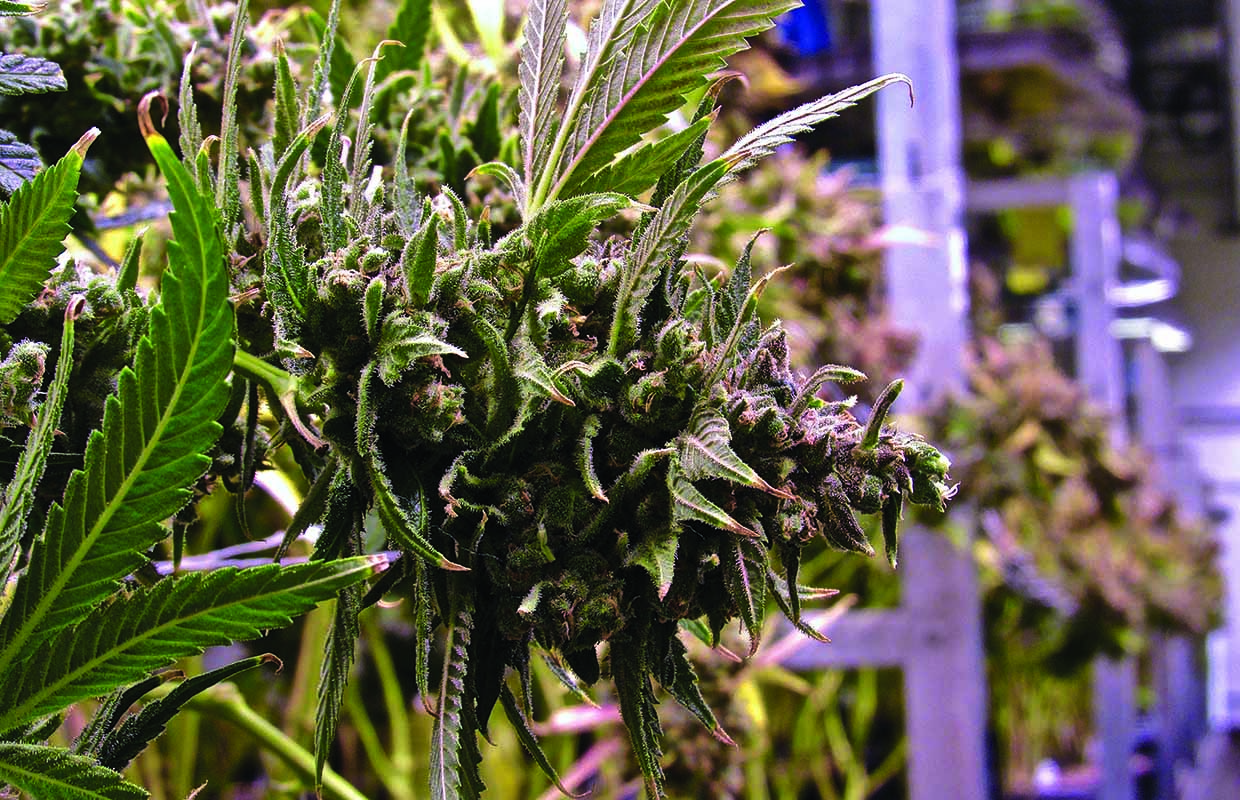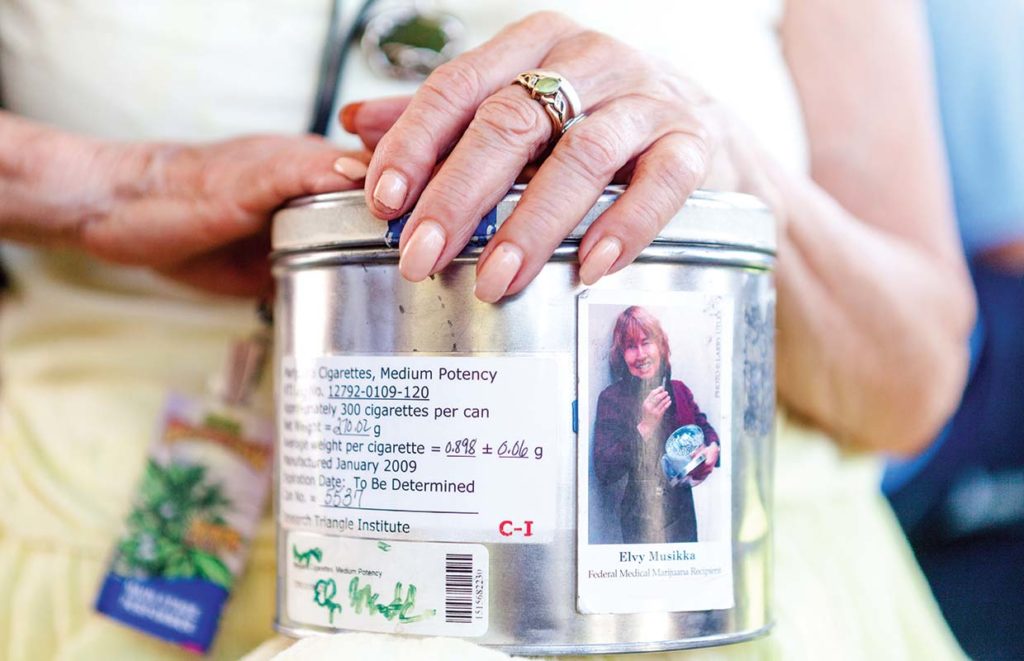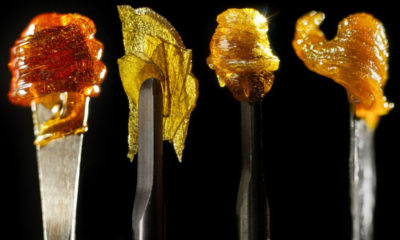
Current Events
Big Pharma Gets Green Light
Guess who benefits when Uncle Sam opens the research weed supply chain?
Cannabis is still highly dangerous and has no place in modern medicine, according to the U.S. government – who still wants a bigger and better supply of the troubled stuff on hand anyway, just in case.
And Uncle Sam wants you – yes, you – to try and grow some research-grade cannabis for your country. But good luck with that. It won’t be easy.
This past summer, after several unexplained delays, fueling unfounded rumors that the Obama Administration would legalize marijuana of its own volition, the Drug Enforcement Administration announced on Aug. 12 that it would not be removing marijuana from Schedule I of the Controlled Substances Act.
Despite a growing body of knowledge in other countries and a majority of American states with some kind of medical marijuana program, the decision to leave marijuana in the Schedule I designation means pot is still officially as dangerous as heroin and LSD. Cocaine and methamphetamine (both Schedule II) are officially safer and more beneficial.
The reasons why, given by Acting DEA Administrator Chuck Rosenberg, is a continuation of the circular logic that’s fueled the U.S. war on weed for more than four decades. And the DEA’s own language now seems to suggest that Big Pharma – not the cannabis industry – will have the inside track to a better supply.
“There is growing public interest in exploring the possibility that marijuana or its chemical constituents may be used as potential treatments for certain medical conditions,” Rosenberg wrote in a letter published in the Federal Register on Aug. 12. “One of the ways DEA can help to facilitate research involving marijuana is to take steps to increase the lawful supply of marijuana available to researchers.”
Research Monopoly Ends
Currently, there is a single government-approved marijuana supplier: the University of Mississippi. Holding this monopoly for nearly 50 years, access to its supply is extremely limited, granted only to funded researchers receiving several onerous layers of bureacratic approval.
According to NIDA, just eight shipments of government bud went out to researchers in 2015, with another eight shipments in 2016 as of late August.
But this federal marijuana supply chain is set to expand. The DEA now says it will consider applications from commercial enterprises as well as from research universities – which thrilled some researchers.
“It’s a complete and total end of the NIDA monopoly,” said Dr. Sue Sisley, whose DEA and NIDA-approved study into whether smoked cannabis helps combat veterans with PTSD is scheduled to begin this fall.
“This new policy permits commercial growing operations to be approved with the purpose of producing a product that can be used in research and also for potential commercial sales,” she said. “The federal monopoly on the production of marijuana for federally-regulated research, in existence since 1968, is now over.”
Despite this, a DEA spokesperson contacted by Cannabis Now said no applications had yet been received by the end of August.

Photo Gracie Malley for Cannabis Now
Government-Grade Ganja
Ole Miss grows a single strain, its terpene content unknown, available in either bulk at $2,497 a kilogram or $14 per joint in one of 13 strengths – low, medium, high, or very high THC or cannabidiol (CBD); placebo, or a combination.
And “very high” THC and CBD caps out in at 13 percent THC, meaning researchers are forced to give human subjects less than half as strong as cannabis from recreational stores or dispensaries.
This is the marijuana still being supplied every month – mailed out in half-pound tins of prerolls to the surviving patients in the Compassionate Investigational New Drug Program. Started in the 1970s, after a glaucoma sufferer named Robert Randall sued the government and accepted a settlement of free government-supplied weed for life, enrollment in that program capped at 30 people, of whom four are still alive. One, Irvin Rosenfeld has been receiving nine ounces monthly since 1982 for a rare bone disorder; Elvy Musikka, who suffers from glaucoma, began receiving eight ounces monthly in 1988. The program closed to new patients in 1992.
While this weed has kept Rosenfeld and Musikka alive and healthy, researchers have long complained that the hard-to-get supply is also insufficient. Today, there’s an increase in demand for research into extractions high in cannabidiol (CBD) and low in THC – research clamored for even by longstanding drug warriors like U.S. Sen. Dianne Feinstein. High-CBD, low-THC oil has been approved by state governments even in reliably red Republican parts of the country that still have punitive anti-marijuana laws on their books.
“DEA fully supports research [of extracts],” Rosenberg insisted in the Aug. 12 letter. “DEA has concluded that the best way to satisfy the current researcher demand for a variety of strains of marijuana and cannabinoid extracts is to increase the number of federally authorized marijuana growers.”
But there’s a catch – several of them, really.
Not So Fast
The DEA does not specifiy the number of new applicants allowed or how much they’ll be able to grow. The organization does state suppliers will be “limited” in order to avoid diversion of government-grade weed to the black market. It also outlines that while experienced suppliers will be considered, violations of the Controlled Substances Act, for, say, growing marijuana, may count against them.
The DEA’s language surrounding those who will be accepted for the program highlights an advantage for pharmaceutical companies over cannabis growers striving to work within the system.
“Should… a marijuana-derived drug [be] shown to be safe and effective for medical use, pharmaceutical firms will have a legal means of producing such drugs in the United States – independent of the NIDA contract process.”
Meanwhile, other obstacles remain. In the early 2000s, University of Massachusetts professor Lyle Craker received initial approval to grow research cannabis, but never got the chance. His application was personally rejected by then-DEA Administrator Michele Leonhart in 2005. Craker says he plans to apply for federal government approval – but first, he needs the permission of his state government, which has yet to offer a response.
And even if the government adds supply, there’s no guarantee research will be funded or approved.
Research hit a peak – 17 applications in a five-year period after the California Legislature used $9 million to create a medical cannabis research institute in 1999.
Once the state stopped funding the research, the studies stopped.
Sisley’s research is also state-funded, with $2 million from the Colorado Department of Public Health. It’s very unclear if more money will be forthcoming from other sources.
Still, “You’ll agree the handwriting is on the wall… this product needs to be studied,” Craker says. “We need to be able to supply various strains to medical professionals. We need to test and see if these strains are different than others, we need to look at the terpenoids, not just the stuff that makes you high.”
“The DEA must be recognizing that to some extent that they are losing control.”
Just how much control the DEA will ultimately relinquish, however, remains to be seen.
Originally published in Issue 23 of Cannabis Now. LEARN MORE

























